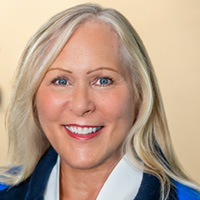
Some things never change and divorce settlements seem to be one of them. Although divorce rates have been declining for decades, receiving a fair-settlement remains as challenging as ever for one or both parties because the same issues persist. In this article, I’ll discuss those issues and offer at least two solutions to change these outcomes for the better
First, let’s look at U.S. divorce statistics.
Surprisingly, only 45 states and the District of Columbia submit enough data on divorce to be part of the national statistics. Those that don’t include California, Hawaii, Indiana, Minnesota and New Mexico. Among the states we can measure as a group, the divorce rate looks to be about 44% of first marriages. The rate increases for second and third marriages.
For better context, we should also examine the declining rate of first marriages. This decline began in 1970 and has leveled off in recent years. But while the divorce rate in the U.S. has also been declining since 1980, the prevalence of gray divorce (divorce over age 50) is on the rise worldwide. Now, what we know from our divorce work is that around the 25th year certain milestones can contribute to cracks in a marriage, including empty nests, medical issues due to aging, and job loss.
Top 6 Reasons for Divorce
According to the report “A Look at the Niche 2022” from the Institute of Divorce Financial Analysts (IDFA), we know that the reasons for divorce stack up as follows:
- Basic incompatibility: 46.5%.
- Infidelity and/or Sexual Issues: 19.4%.
- Money Issues: 14.5%.
- Emotional and/or Physical Abuse: 14.2%
- Parenting Issues: 2.8%
- Addiction: 2.6%
Looking back at the census, we learn that women who divorced in the previous 12 months were more likely than recently-divorced men to be living in poverty. For women it’s 20%, compared with men at 11%. The poverty statistics get worse as women (and men) age. According to the Social Security Administration, divorced individuals make up 12% of the elderly population but 20% of the elderly poor. Surprisingly, the never-married elderly (age 65-plus) have the highest poverty rate among all groups in this age bracket, followed by those who are divorced and widowed.
Attorneys Optional
That’s a bit of the divorce landscape. But if the divorce rate is down, what’s the problem? The majority of folks contact an attorney first. And in the U.S., a couple doesn’t need an attorney to divorce.
That’s not to say that an attorney isn’t necessary. Your clients should always understand their legal rights. Make sure they have met with an attorney to understand their legal rights in divorce in their state. Ideally, the next stop would be a divorce financial planning pro (a Certified Divorce Financial Analyst (CDFA), who may also be a CFP or CPA) that can help one or both parties understand the financial impact of a division of assets, income, and debt in what is likely, to date, the largest financial transaction of their lives.
This transaction includes businesses, properties, accounts, pensions, stock options, crypto, cash, gold/silver, cars, boats, collections of art, wine, guns, cars, and more assets that were attained or increased in value during their marriage. This can include contributions to accounts from marital money during the marriage.
Neither attorney nor financial professionals are required to dissolve a marital contract. Because divorce is governed by state laws and not federal laws, your clients must follow the practice in their state for dissolution. Counseling isn’t required either.
Now think about this: If your clients simply want to take out a reverse mortgage, they are required go through counseling. This is required because this product is designed for an older audience that is often living on fixed incomes and dealing with what is often their most valuable asset. Sound a little like the divorce process I described? But surprisingly, there is no counseling requirement for divorce.
“Just the Way Things Are” Isn’t Good Enough
The work we do in divorce financial planning illustrates the problems that have always been with us and seem as though they are “just the way things are.” This includes the well-known yet often misunderstood choices on how to divorce.
Your clients may believe they can divide their assets, income and debts across their kitchen table. Or they may be simply trying to save money. This is also known as a pro se or DIY divorce. Often with this process, only one party is financially savvy or has access to the documentation and accounts. A DIY divorce can quickly fall apart as it dawns on the less savvy partner that they are in over their head and need help. If the less financially savvy partner asks for help at this point, the savvier partner may reply, “Don’t you trust me?” “We can do this” or “Let’s not give all our money to attorneys.”
We see the same dynamic over and over in every other process. One party becomes acutely aware that they do not have a full understanding of their marital estate and are being hounded to settle long before they actually do. Fast forward months or years and divorce fatigue takes over, funds to seek appropriate financial guidance dwindle, and we end up with an unfair settlement. This is a solvable problem by engaging a competent divorce financial professional earlier in the process.
In divorce financial planning, we develop a base case of what the couple owns, owes and earns inside the marriage (date of marriage through date of separation). Next, we confirm that this base case is correct, complete and current. Then we begin to move assets, income and debts around in potential scenarios that considers the tax impact, complexity and cost of dividing a particular asset. We also look at the ability of each party to earn, as well as the spending needs of each party.
In complex cases, these analyses can involve a CPA, attorney and other professionals. For example, if we are dividing rental or business properties, or dividing a business, we’d also bring in an appraiser for the property and a valuation expert for the businesses.
Remember that a person divorcing often makes that first stop to an attorney. That’s a good thing. However, problems can develop and accelerate if they continue to use the attorney as a financial professional. (It’s rare for an attorney to be trained in finance.) The person may also spend most of the time and money they had planned to dedicate to their divorce proceedings before the attorney collects all the information on the assets, income, and debts. The other stumbling block is the amount of time and money spent prior to the first offer across the aisle.
Improving Settlement Outcomes
Although we have incomplete statistics on divorce due to incomplete data, we do not have incomplete statistics on poverty. To solve for the poverty issue, I believe strongly we have two policy options that can change and improve settlement outcomes.
Policy Change #1: Remove all cost and barriers to gathering the financial documentation on the marital estate. Compel financial institutions to report to each person that has a Social Security number or other identifier annually on assets owned or debts owed. (I’m looking at you, Cook Islands and South Dakota trusts, among others). This saves an Incredible, measurable amount of time and money (often spent by the less monied spouse) and preserves the marital estate for division between the parties who built it.
Policy Change #2: Compel every signed settlement to be entered into a blind national database capturing the assets, income and debt the couple started with (that base case) and where they settled.
Industry Change #1: For good measure, let’s look at my industry’s hunger to manage the assets after divorce but absolute reluctance to ethically (by charging for time) help families resolve a financial settlement.
Additional Reading: Ten Steps to a Successful Succession Plan
We cannot examine what we do not have data for. We do not know the degree to which fair settlements that are available inside the marital estate fail to stay fair when divided. We can see the results in the poverty statistics.
This is highly solvable. If we want to help families manage of life’s toughest transitions, we can do it. Policy and industry changes are the place to start because good intentions are just that and do not get the results families need.
Bonnie A. Sewell, CFP, CDFA, AIF, CEPA, is a managing director and senior wealth advisor with Dakota Wealth Management. She is the author of “Love-Jacked! Divorce Your Spouse, Not Your Dollars” and believes effective divorce financial planning is the best antidote to one of life’s most difficult transitions.







